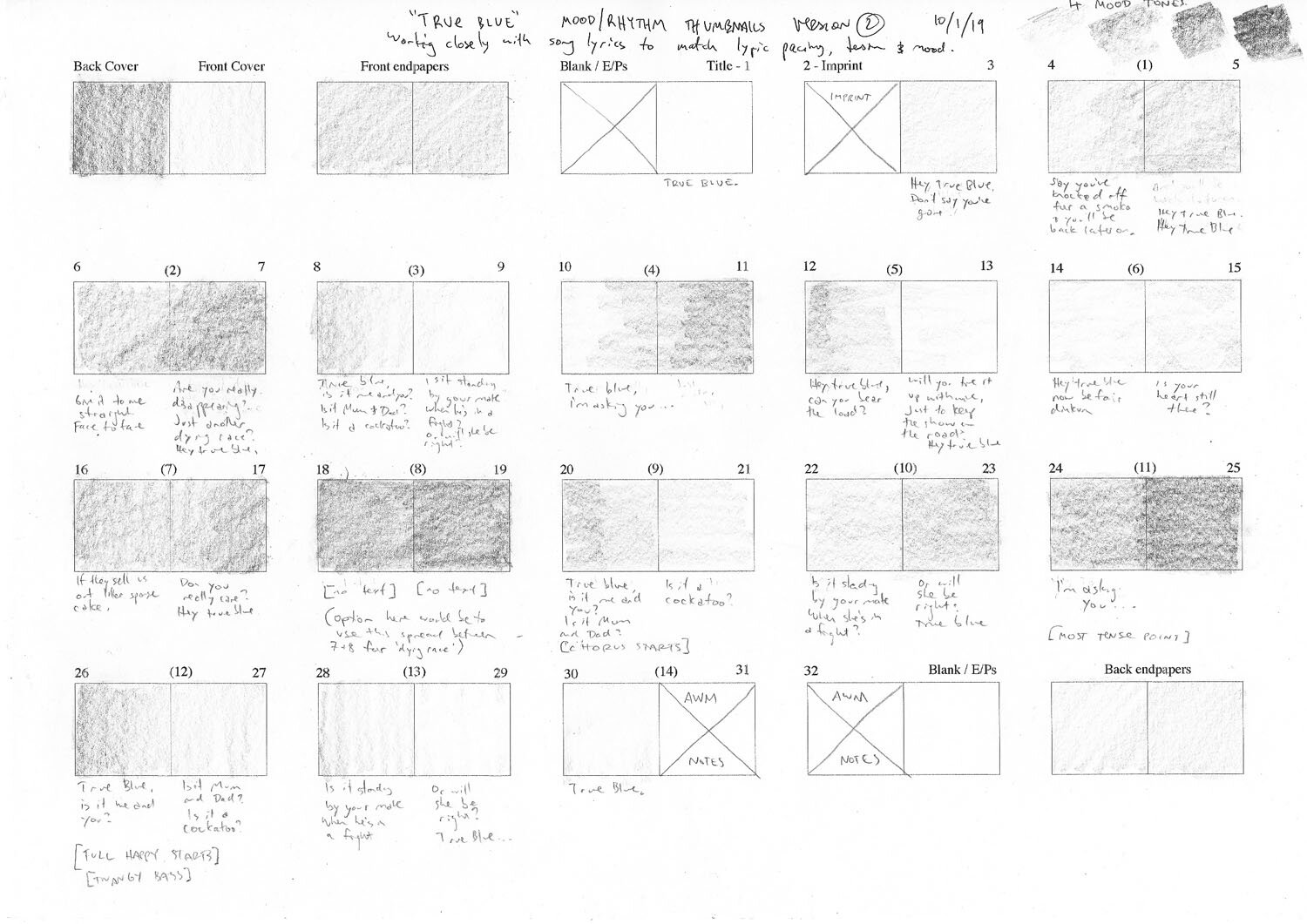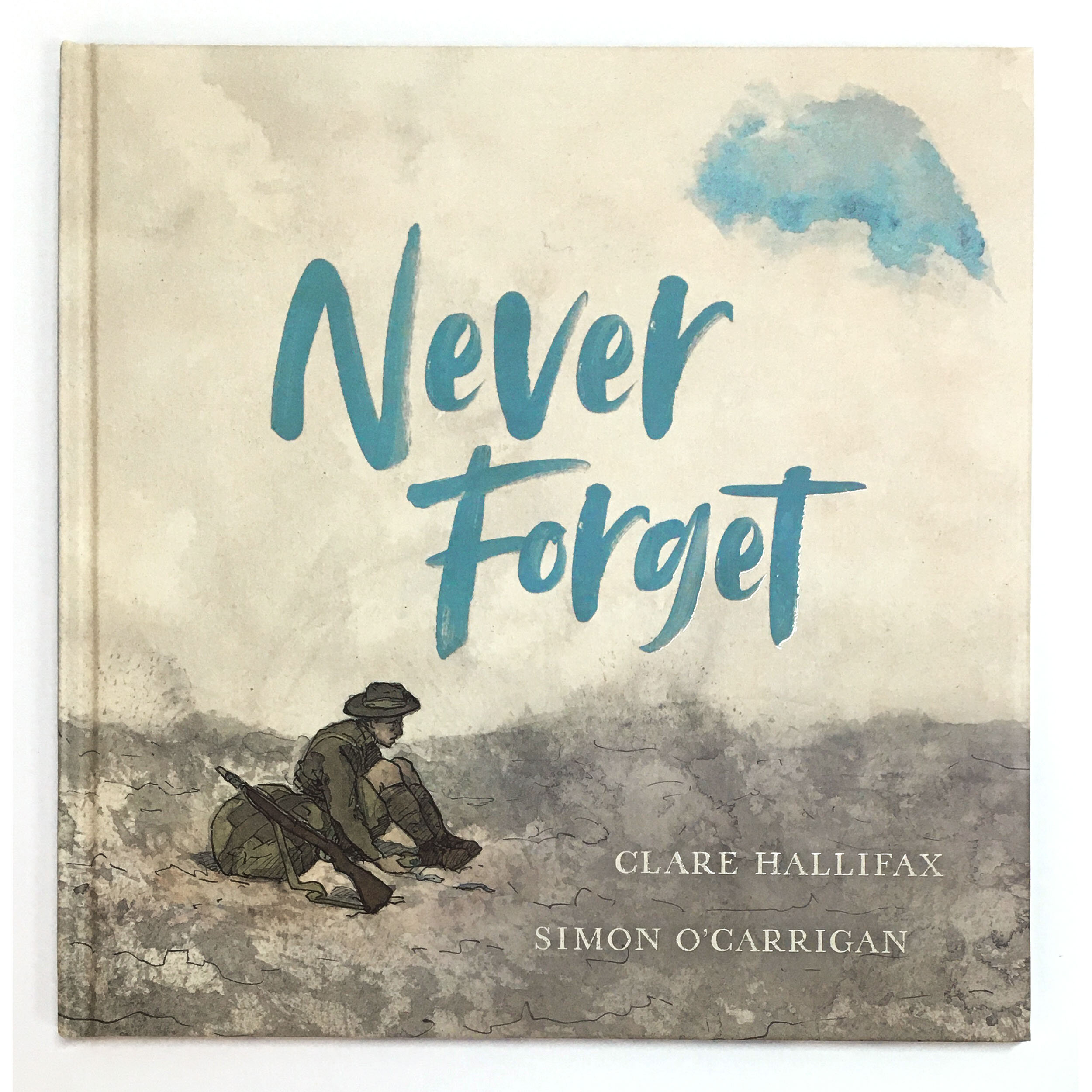
A picture book about Australian artists at war.
Telling a fictional story of a family at war, by curating and transcribing the very real artworks made by Australian soldiers and artists at the front lines of The Great War.
Client: Omnibus Books / Scholastic Australia
Year: 2020
Medium: Ink & watercolour
Author: Clare Hallifax
The process
Context: Omnibus Books approached me about illustrating a picture book about The First World War. They were drawn to my work in ink, and invited me to take inspiration from some Australian folk songs that referred partially to the war.
Brief: Clare Hallifax initially worked as my editor, providing me with a song as inspiration and a story concept synopsis to start me off. As I requested permission to morph and evolve the focus, she took well to my plans and gave me the scope to follow my plans.
Results: As my illustrations developed, the focus of the book shifted significantly away from the song into it’s own project, about the art and the history. To acknowledge and develop this, Scholastic asked Clare to write a whole new text for the book, in response to my illustrations.
The book was first published by Omnibus / Scholastic Australia in 2020. You can purchase a signed copy of Never Forget from my store:
The research
Most of the illustrations were made in close reference to one or more artworks made by official or unofficial Australian War Artists. This was made possible by many great public institutions, their collections, and their staff.
Research and permissions assistance came from the curators and researchers at the Australian War Memorial, The Art Gallery of New South Wales, The Art Gallery of South Australia, Queensland Gallery of Modern Art.
I also received advice and research assistance from The National Library of Australia, The Mitchell Library - State Library of New South Wales, and the State Library of Victoria.
I am grateful to the descendants of the artists whose work inspired the book, for giving me permission to reinterpret the work of their ancestors.
Full details of all the artworks I drew inspiration from, and where to view them, can be found in the back of the book.
Below are some photos from various research & sketching trips I took to view artworks and talk with curators.
























The reference material
From all of the artwork I researched, I kept recognising scenes as if I had seen it already. I realised that many famous war films, books and stories borrow heavily from this same body of source material.
This is in part the reason I chose to refer directly to the works, and then provide information about the originals. I wanted people to know that many of these works are in our public collections to be seen.
I considered myself as a curator, or a conductor, arranging the reference artworks to follow a fictionalised journey across the full duration and key battles of the war.
Some of the work I reference is by official war artists, who were appointed by the Australian government to document the war visually during and shortly after the war.
Other works were by soldiers, nurses, family members back home and others, who as amateur artists used sketching as a way to comprehend the magnitude of what they were experiencing.
All of the works are emotionally charged.
Many of the artworks I reinterpret for this book are in a wild variety of media. Some are very, very large oil paintings. Some are very small watercolours, on the back of scavenged paper. A number were drawn in medical supplies, like iodine, or other scavenged materials.
To tell my own fictional story while referring to these works, I transcribed them all into the same scale and media, as if it were my own sketchbook.







The illustrations
Early on, Clare and I decided the book would be illustrated primarily in ink (my favourite of all mediums). We also talked about using blue as a universal link: everyone lives beneath a blue sky, near a blue ocean, and these things have no borders. I also like the notion that, no matter the bleakness around you, there is always blue sky behind the clouds.
The first thing I did was to make a storyboard assigning a mood to each page, simply by different levels of light and dark. Then, once this helped me imagine a story, I looked through my reference material to find suitable artworks. I made a digital collage layout for each page spread to refer to.
When it came time to make the final artwork, I used a special fountain pen to create linework. It is special because the flexible nib makes it feel like a brush and be very expressive. I used ink wash with brushes, some blue ink wash, and then—very sparingly—a little watercolour to draw the reader’s eye across the pages.
Did you know?
Sketchbooks of war
During 1914–1918, the Australian War Records scheme issued sketchbooks to soldiers who showed any interest.
Their hope was that sketching would help the soldiers comprehend their experiences, and also provide a record for our history.
Many of these sketchbooks can be viewed by appointment at our national and state libraries, and at the Australian War Memorial.
During my research, some families who were unaware their relative had a work in the state library.
I banned all my favourite songs
Once I finished research and started drawing the final artwork, I banned myself from listening to any familiar music or radio shows.
I listened only to classical and modern classical that had been composed during this, or other, times of war. A lot of the patriotic music gave way over time to more despairing sounds. It made for a very sad few months but I learnt about a lot of powerful music!
I did this because, while illustrating, I wanted to have some kind of feeling of having my regular world taken away, just as people all over the world did during WW1.
No roughs, no drafts, no erasers
I didn’t draw roughs for this book. Instead, the ‘roughs’ were collages of reference material.
The final inks were drawn in one session, and under a time limit.
Working in ink means that, even if I decided to cheat my own rules, I couldn’t because you can’t erase ink!
I worked this way because I wanted to feel the pressure to get it right, to have to focus and concentrate, and to feel stressed. I hope it shows in the work — and I hope I don’t have to do it again for a while!
The faces are all real people
Nearly all of the faces in the book are very carefully drawn based on the original reference material.
Since most of that was drawn on site during the war, it means all the people in this book were real people.
In addition, a number of the faces have been changed to bear the likeness of my family. We’ve been lucky not to experience war first hand, but I knew that if I had to draw my parents looking worried about whether I would come home, then I would feel sad and that would show in the artwork.

















